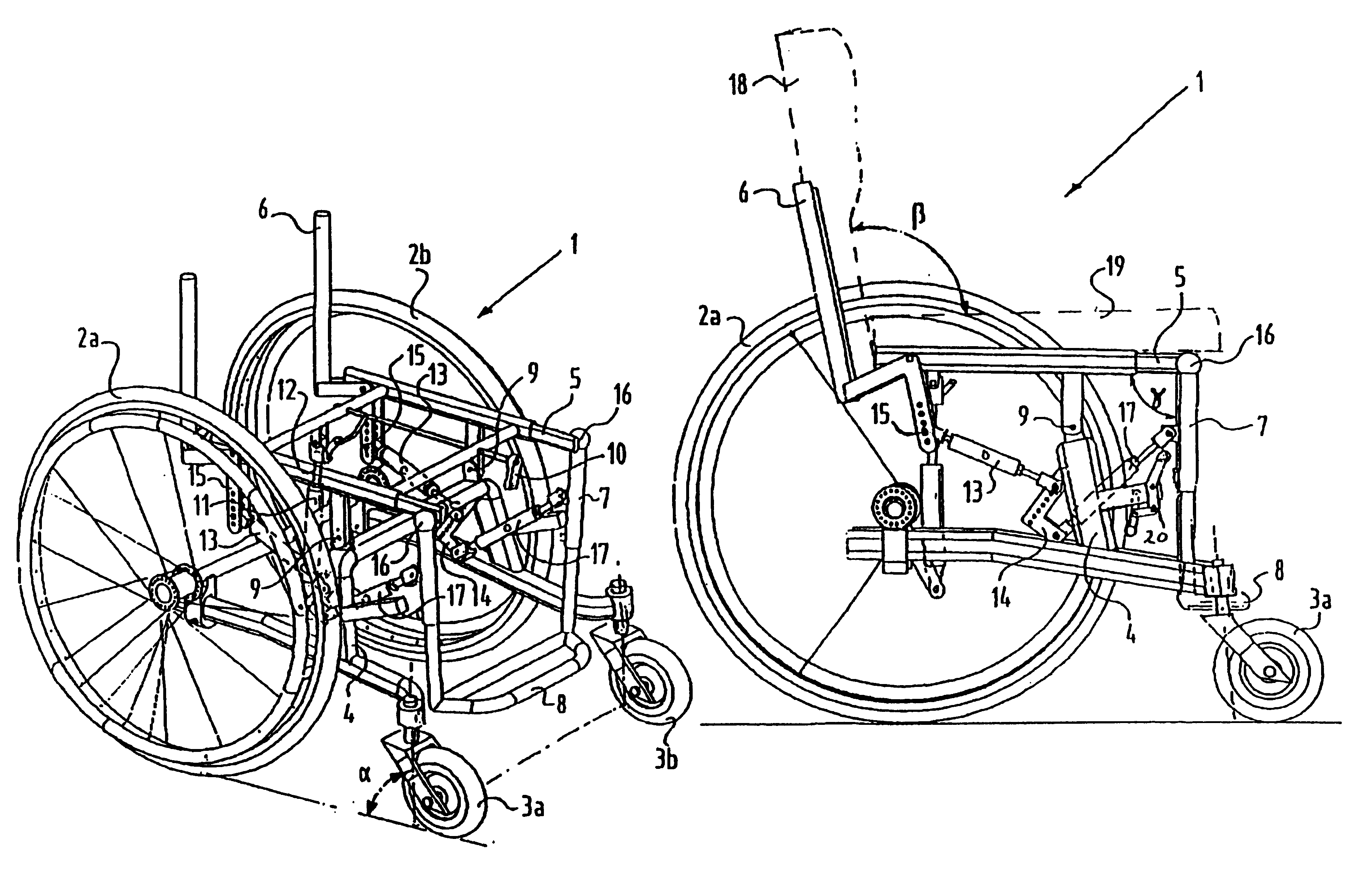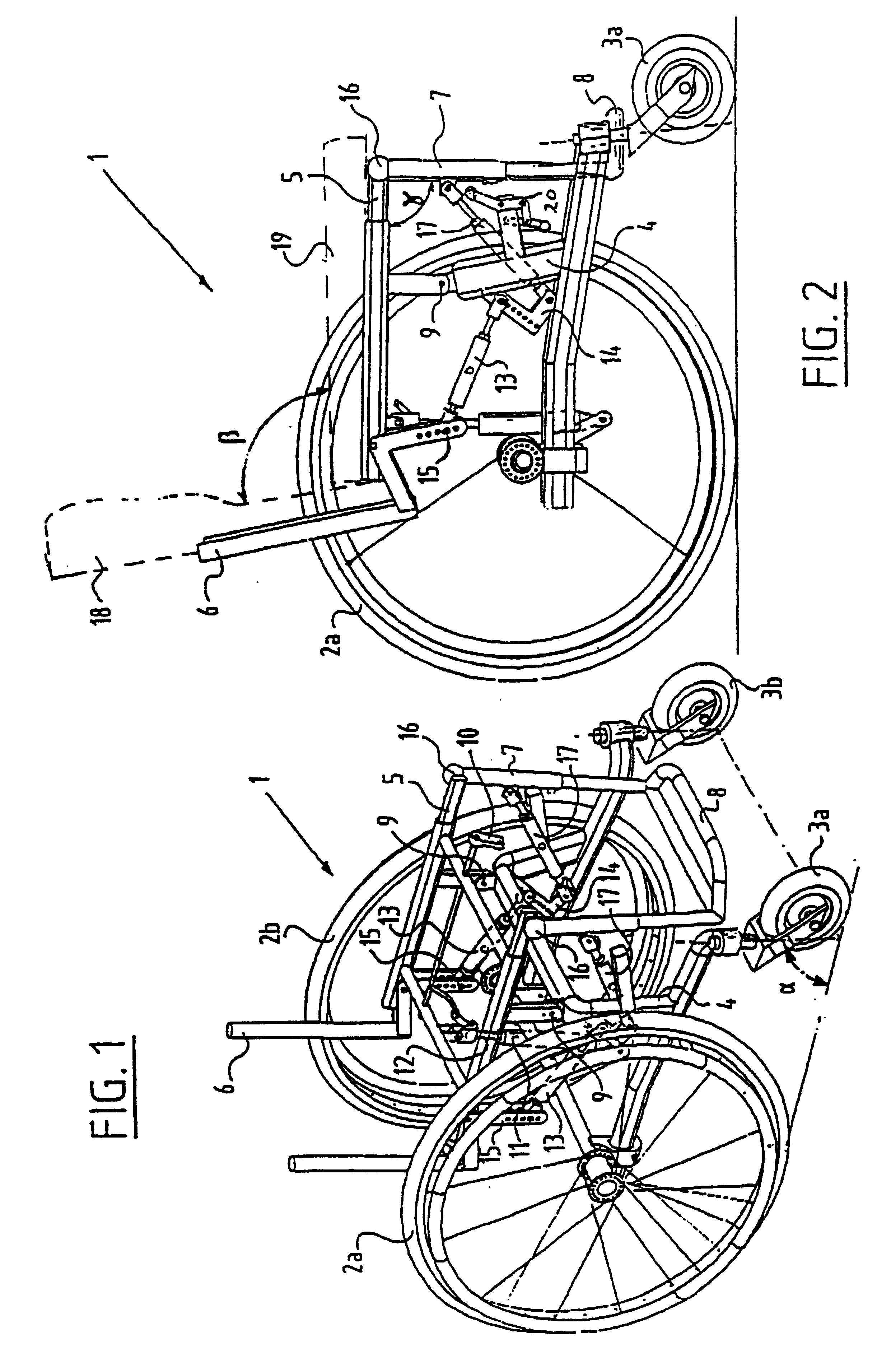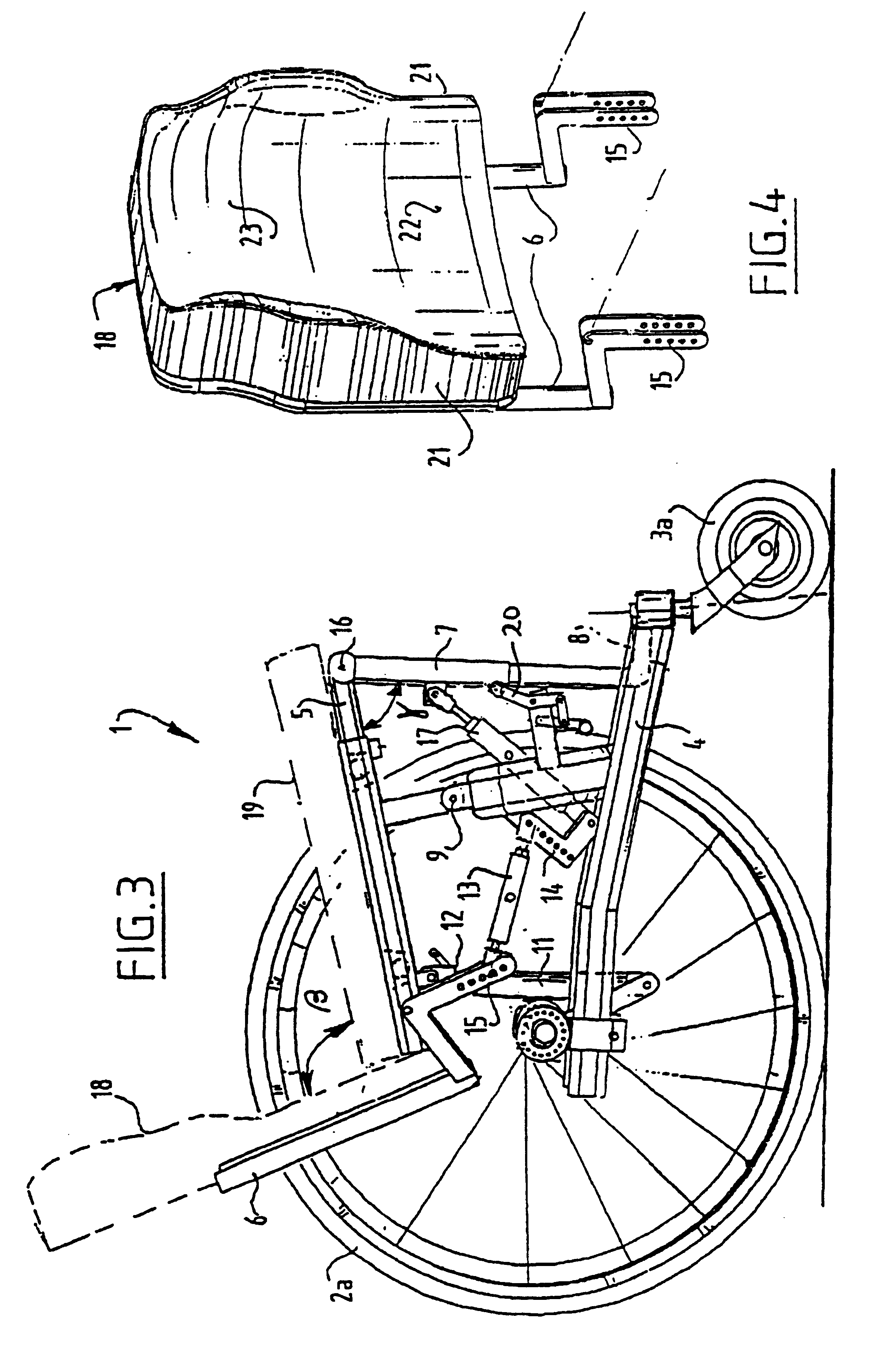Wheel chair
a wheel chair and seat technology, applied in the field of wheel chairs, can solve the problem that the prior art wheel chair does not enable an acceptable seating position
- Summary
- Abstract
- Description
- Claims
- Application Information
AI Technical Summary
Benefits of technology
Problems solved by technology
Method used
Image
Examples
Embodiment Construction
The wheel chair disclosed here is characterized in that the seat can be moved wherein the center of gravity of a user's body is also moved. In particular it is possible for a user to move the seat himself with the aid of spring means, for example a gas spring, between the sitting position and the driving position while sitting. The invention is in particular based on the insight that the location of the body's center of gravity while sitting and driving is a decisive factor in the realisation of the ideal seating position of a wheel chair user. According to the invention, in active condition this center of gravity of the body must be located downwardly and rearwardly, seen in the direction of movement, of the position of the center of gravity of the body in passive condition. According to the invention, when the seat is being moved the body's center of gravity is moved so that an optimum seating position of the disabled user is ensured at all times both in the active condition, that...
PUM
 Login to View More
Login to View More Abstract
Description
Claims
Application Information
 Login to View More
Login to View More - R&D
- Intellectual Property
- Life Sciences
- Materials
- Tech Scout
- Unparalleled Data Quality
- Higher Quality Content
- 60% Fewer Hallucinations
Browse by: Latest US Patents, China's latest patents, Technical Efficacy Thesaurus, Application Domain, Technology Topic, Popular Technical Reports.
© 2025 PatSnap. All rights reserved.Legal|Privacy policy|Modern Slavery Act Transparency Statement|Sitemap|About US| Contact US: help@patsnap.com



